How wide is too wide, is hookless pointless, are carbon spokes worth it and what aero innovations are coming next? We ask Parcours’ Dov Tate the big questions about road bike wheels
The dynamic British wheel brand talked to CW exclusively about a new study it's conducting on how to quantify aero wheel handling stability - the first of its kind - and we picked founder Dov Tate's brain about the other stuff, too
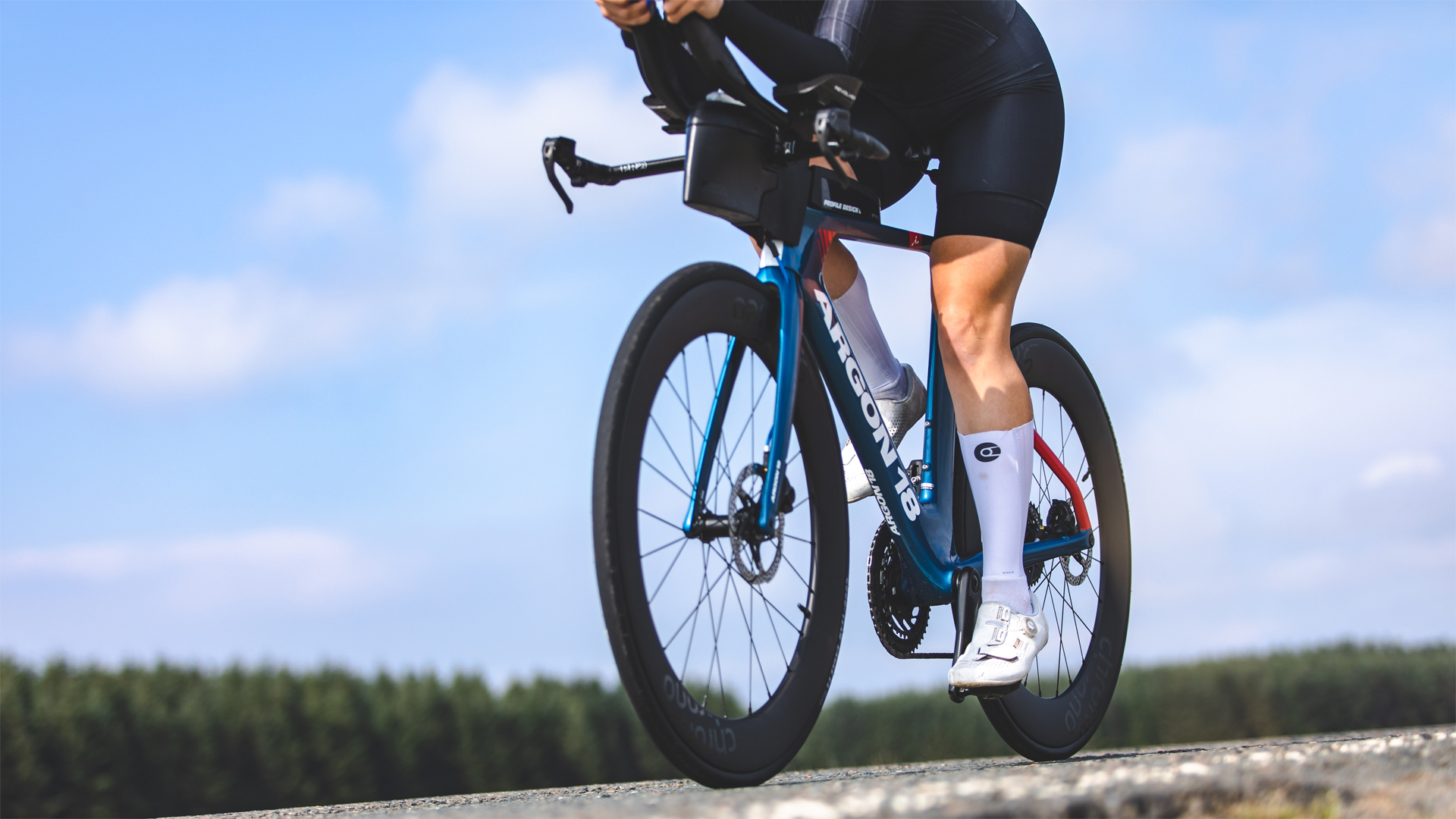
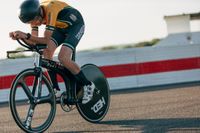
“You’ve got to be more than just ‘faster’ because everybody is doing faster now,” says Dov Tate, the founder of UK wheel brand Parcours.
“A wind tunnel will tell people how fast they will go but now we’re looking at a way to quantify how stable they are,” he continues. “But there’s no unit for handling stability. There is for drag. Most people understand what a watt of drag is. I want to be able to put a relatable figure on stability. Is a saving of 3.5 watts worth £1,000? But if it’s 3.5 watts plus 15% improved stability how does that change things? And what does that 15% feel like?"
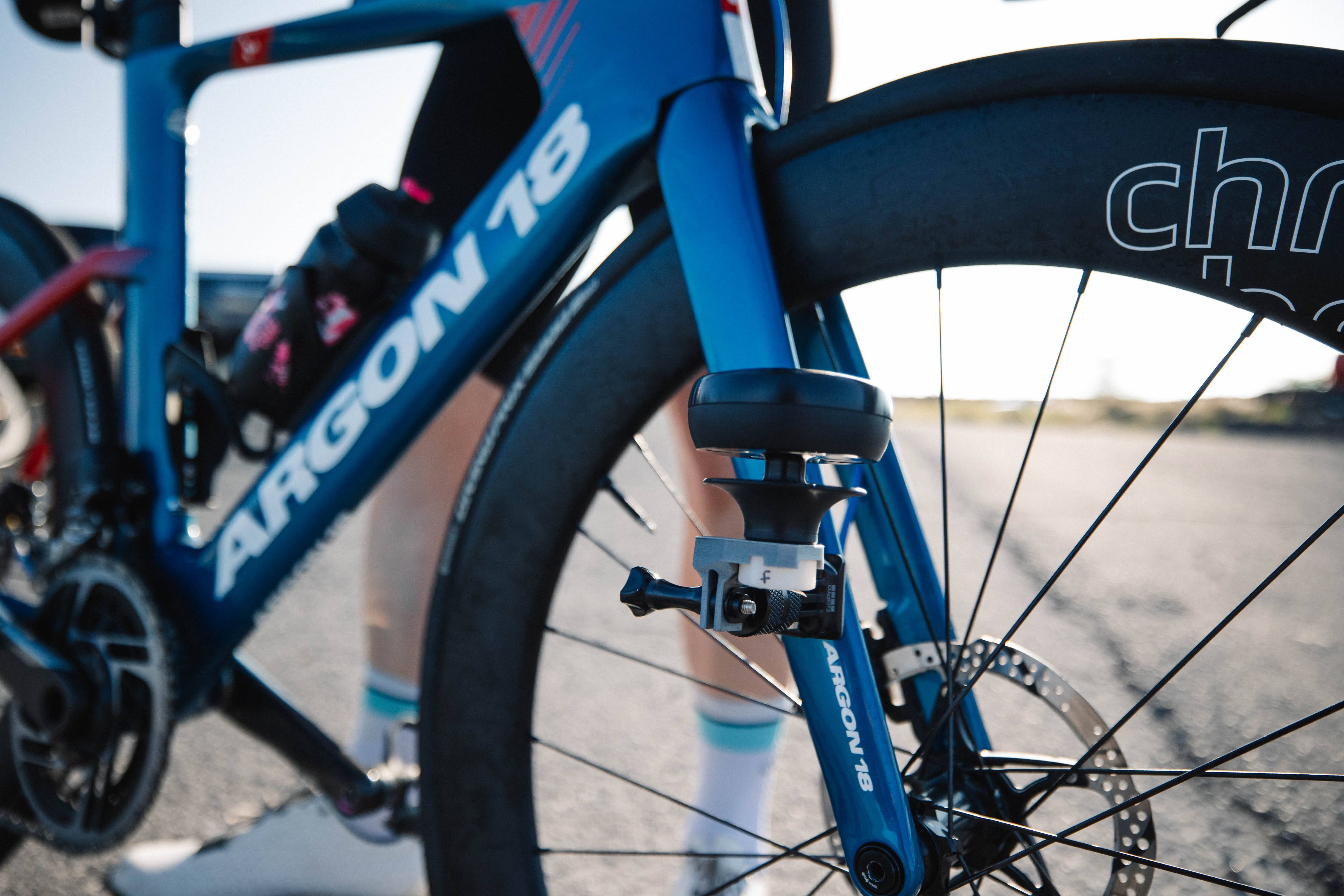
Three years ago Tate, an Oxford-educated engineering graduate, worked with Nottingham Trent University to develop a differential rim profile that he arrived at via real-world studies using marine wind sensors attached to the front and rear axles.
Parcours was first to market with a wheelset - the Parcours Strade - that featured a wide, U-shaped front rim paired with a narrower, more V-shaped rear. His testing had shown that the ‘dirty’ air hit the rear wheel at an overall shallower angle compared with the front, in clean air, and the Strade was optimised using data collected with the marine sensors and validated in the wind tunnel.
Now, Tate has started working on what he believes will be the new crucial measurement for the best road bike wheels along with watt savings - handling stability. He talked to Cycling Weekly exclusively about how he plans to implement it. This time using accelerometers fitted to bikes with different wheels and wheel combinations and again tested in the real world, again with Dr Steve Faulkner and Nottingham Trent University’s sports engineering department.
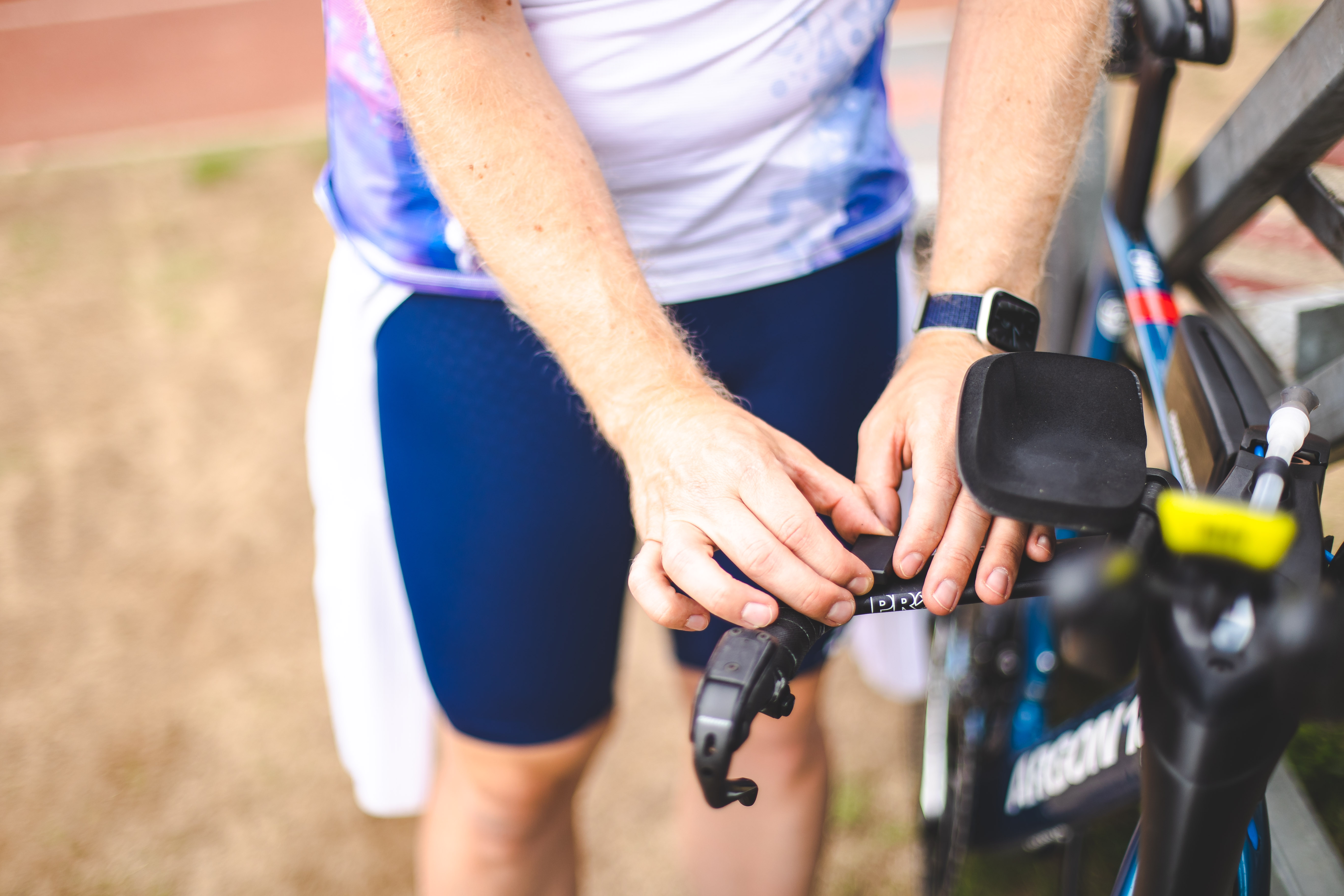
“Essentially the way we tested it was to fit an accelerometer to the bike, fit the wheels that we’re testing and then ride an out and back with a controlled effort aiming to maintain power, speed, position. Runs are done back to back so in theory weather conditions should be close to the same and the idea is that if you run enough of the tests it normalises.
“We used just one on the edge of the handlebar because that's where you get the most motion. One of the biggest challenges with the accelerometry data was trying to squelch out the ‘noise’ from turns and bumps. It has taken a fair amount of time to get to that point. And we had to set a threshold so that an acceleration below a certain G-force doesn't count as an ‘oh sh** moment.”
Tate explains that alongside the data from the accelerometers the test riders were asked to fill in a questionnaire with a ‘perception scale’.
“The idea is that when you mark your perception you can score it numerically. The questions are designed to cross-check each other: how stable does the bike feel? You can cross check that by ‘how safe do you feel?’ and you can cross check that by ‘how much effort is needed to concentrate?'"
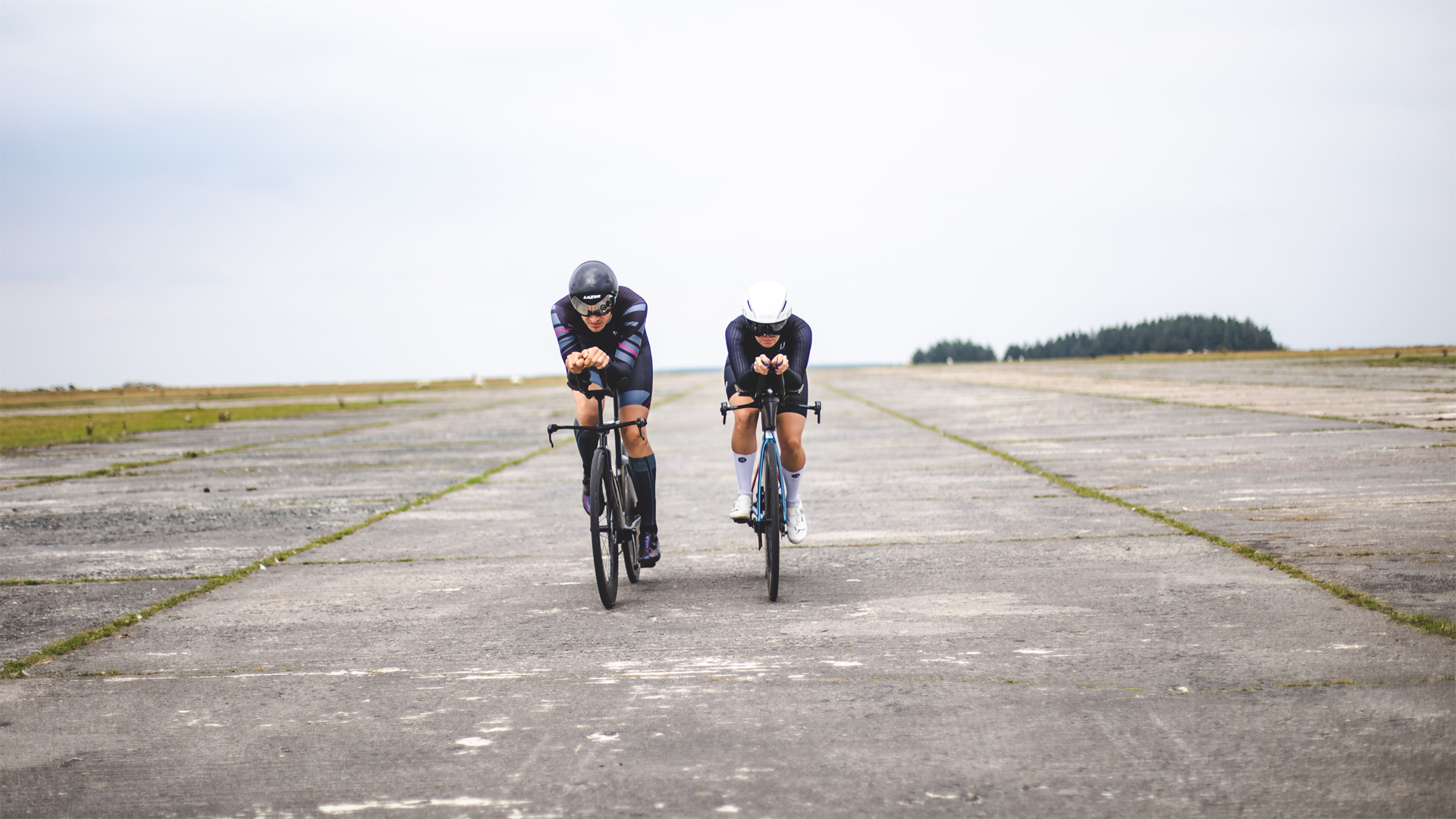
When the testing is complete, the aim is to be able to accurately give riders options for a range of scenarios. “So a more nervous rider may choose to 'bank' the improved stability and keep with their existing front wheel, maintaining aero benefits. Whereas a more confident rider may choose to offset that improved stability and run a deeper/faster front wheel for the same level of stability,” Tate explains.
"From a design perspective, that means that we can potentially go a little further than say we have already with the Chrono Max front wheel and say that if paired with a Disc² rear we can 'afford' to reduce handling stability a little more without going too far for riders but with the option of a faster front wheel. More than likely this would be deeper to be faster."
Course modelling for wheel choice
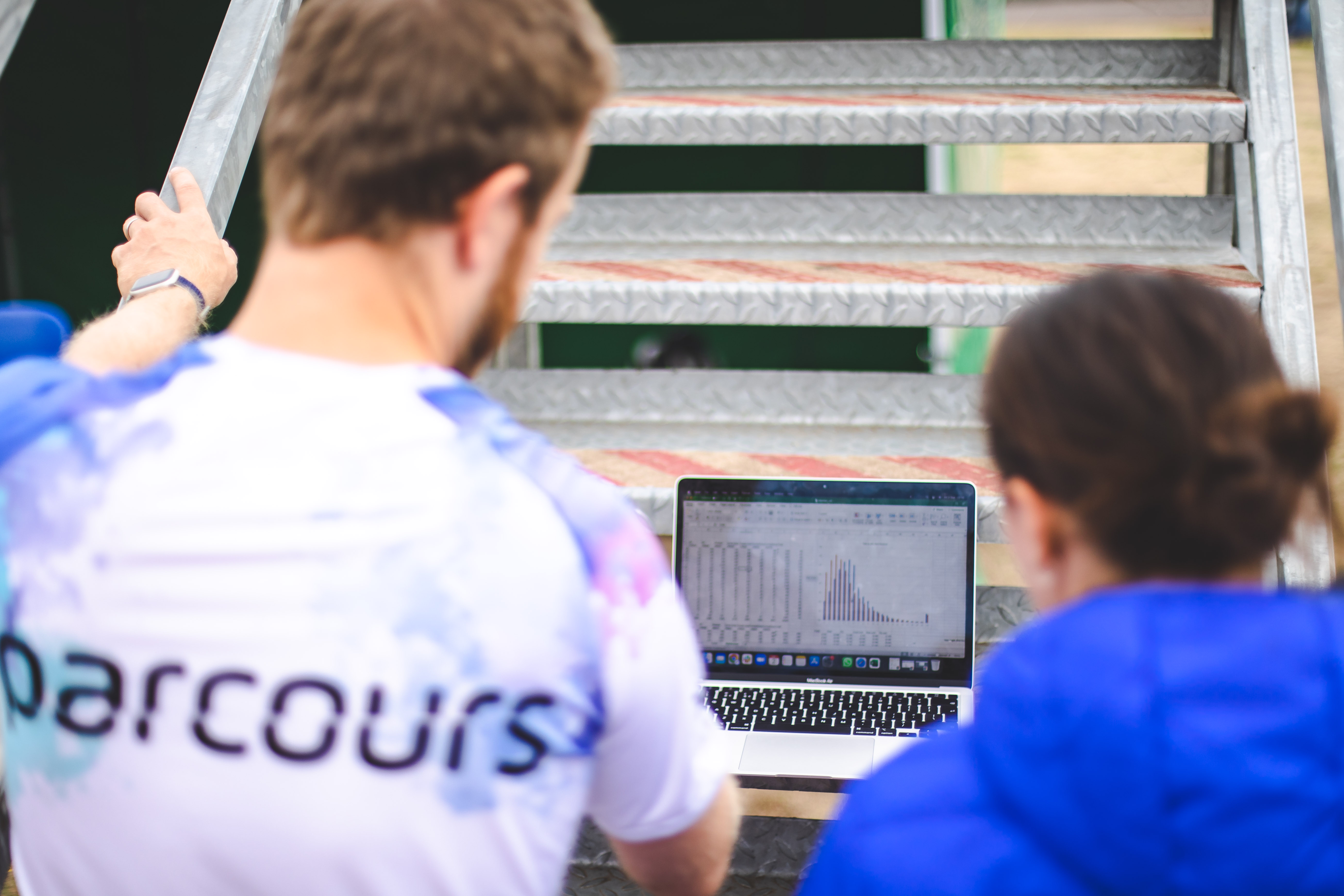
Concurrently with the accelerometer testing, Parcours has been doing more testing with the marine wind sensors which could make up the other half of the picture - modelling courses and weather conditions that could in the future accurately give riders wheel options for a particular race.
Tate took the wind sensors to the Ironman World Championships in Hawaii last month and was able to demonstrate that wind conditions on Kona’s famous Queen K Highway almost exactly matched a flat ride to Windsor he did earlier in the year.
“We’ve been proving that we could rely on our existing data library to model roads that we've not been to,” says Tate.
The modelling of the course and the conditions, says Tate, come from the 75,000 data points taken by the wind sensors in the original project.
“So we can say, let's take all of my data points and standardise it to a ride speed of 30kph. Or we can take all of our data points and standardise it to a 40kph wind speed. We can say to a rider, these are the yaw angles you'll be looking at and this is what you'll optimise [wheel choice] around and we can do that based on 75,000 data points from all sorts of different rides - so you can model a scenario that we've not tested.”
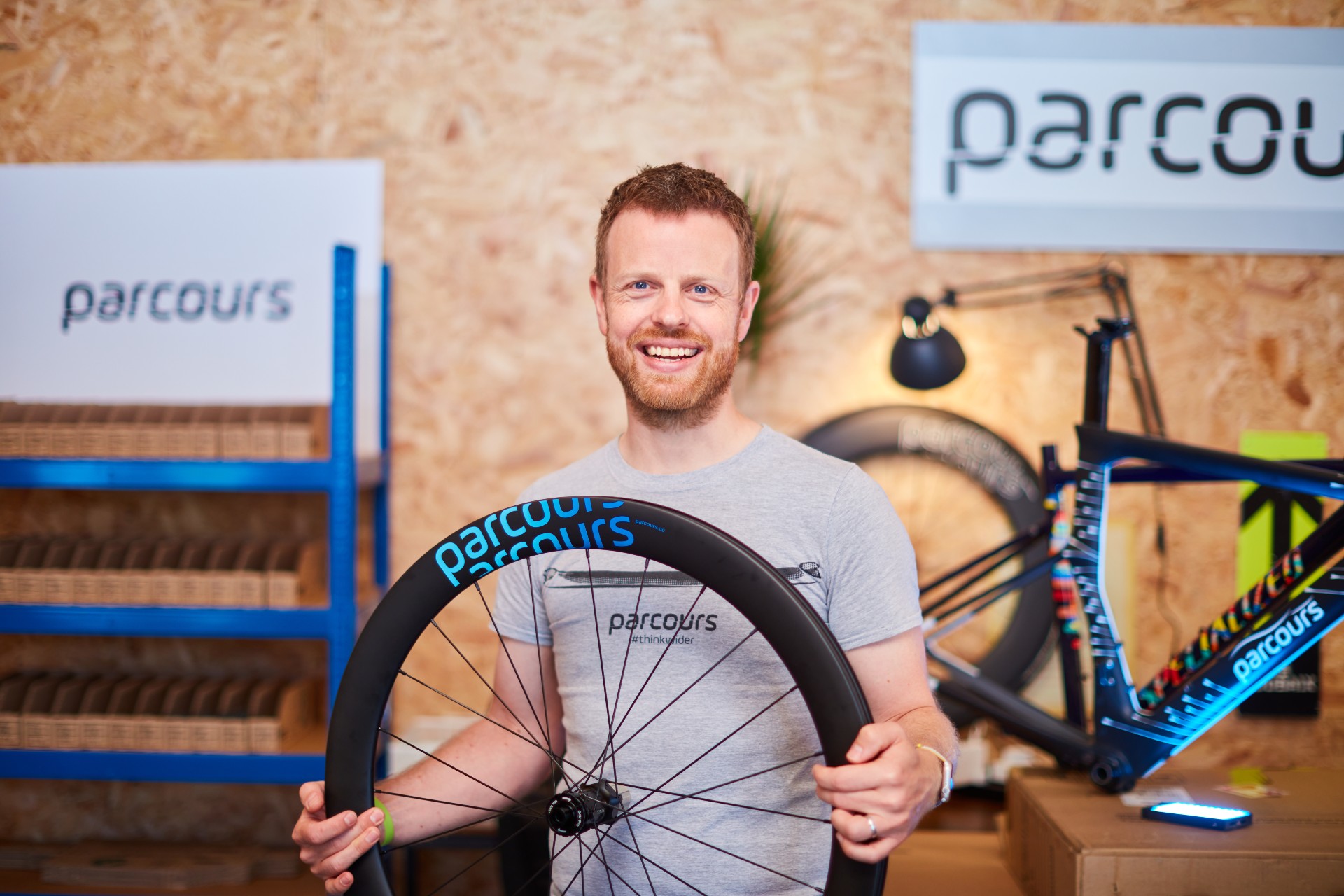
Dov Tate graduated from the University of Oxford with a mechanical engineering degree in 2008 and initially took a job in banking in the City.
Having played hockey at a high level at school and at university (he made the Welsh national squad) the sports bug bit again before long and he took up cycling and triathlon. However, having punctured on tubulars, he realised there was no good-quality, affordable clincher alternative and the idea for a business took shape.
In 2016 he quit his banking job and founded Parcours. Six years later, he watched his wheels being ridden at the front of the Ironman World Championships by Parcours-sponsored athletes. And, he says, there's so much more to come.
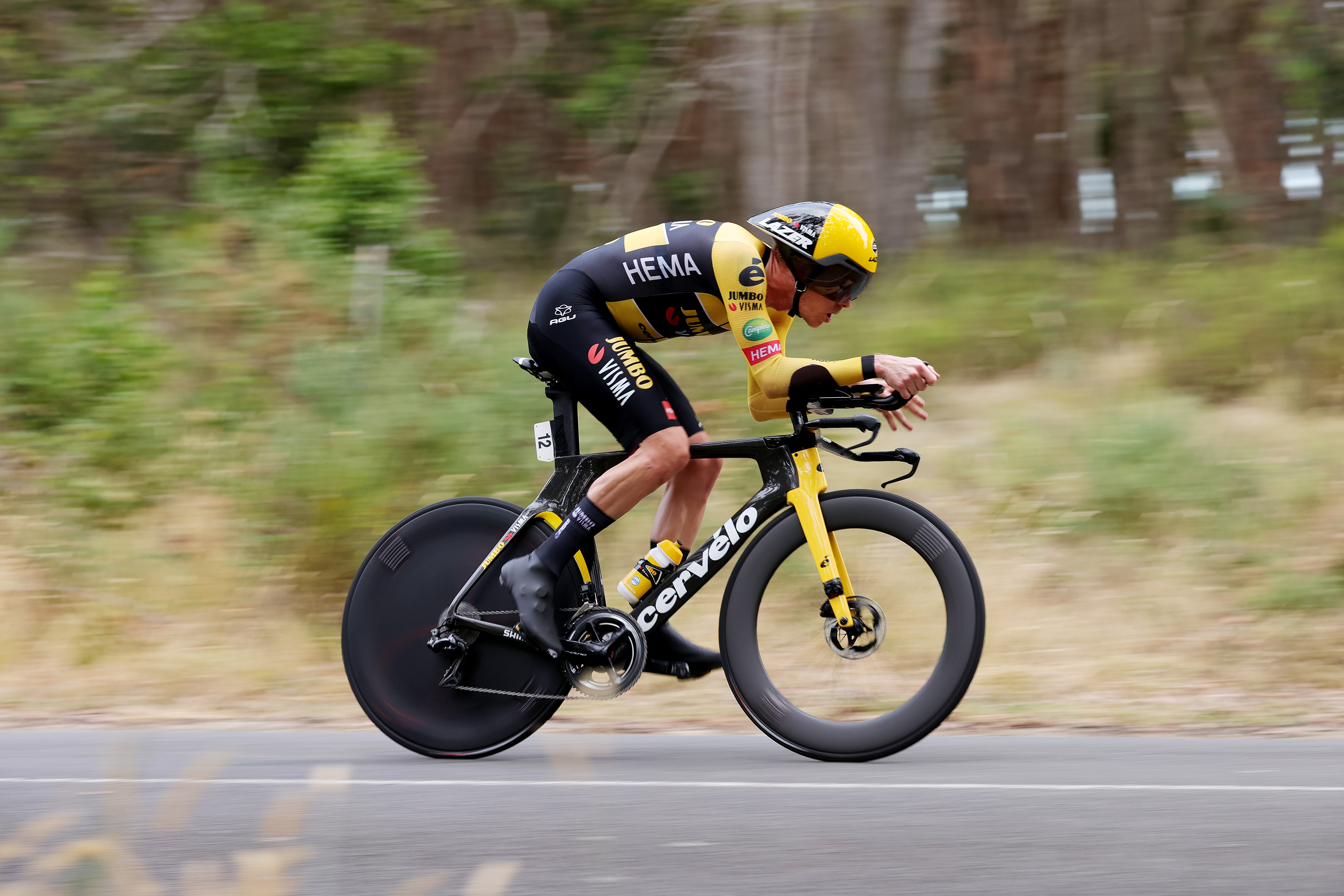
Why is a disc rear wheel more stable than a spoked rear even in high winds?
It’s commonly - and mistakenly - assumed that using a road bike disc wheel in a strong crosswind is bad idea. Dov Tate explains why the opposite is the case.
“Running a disc makes your bike more stable,” says Tate. “Why? Air can't travel through a solid disc so there's a big pressure differential between upwind and downwind.
“That pressure differential moves the centre of pressure towards the back of your bike away from the front wheel and that's analogous to lowering your centre of gravity to make yourself more stable.
“By lowering your centre of gravity you can't be pushed over so easily at the top. In the same way, moving the centre of pressure for the back makes the front more stable. It reduces twitching us but what it doesn't do is change the fact that there will be that constant force on the rear wheel that you feel purely because of the surface area of the wheel.
“However, it’s much more predictable and also much less of a problem because your weight is over the rear of the bike. There will be a limit where if you're in a hurricane you probably shouldn't be running a disc, but you probably shouldn't be riding a bike anyway.
“If you look at a drag chart the biggest difference in drag between a deep section spoked wheel and a disc wheel happens at really high yaw, so you will save more in terms of drag and will be more stable but you just have to be slightly prepared for the side force on the extra surface area.”
Wheels optimised for different speeds
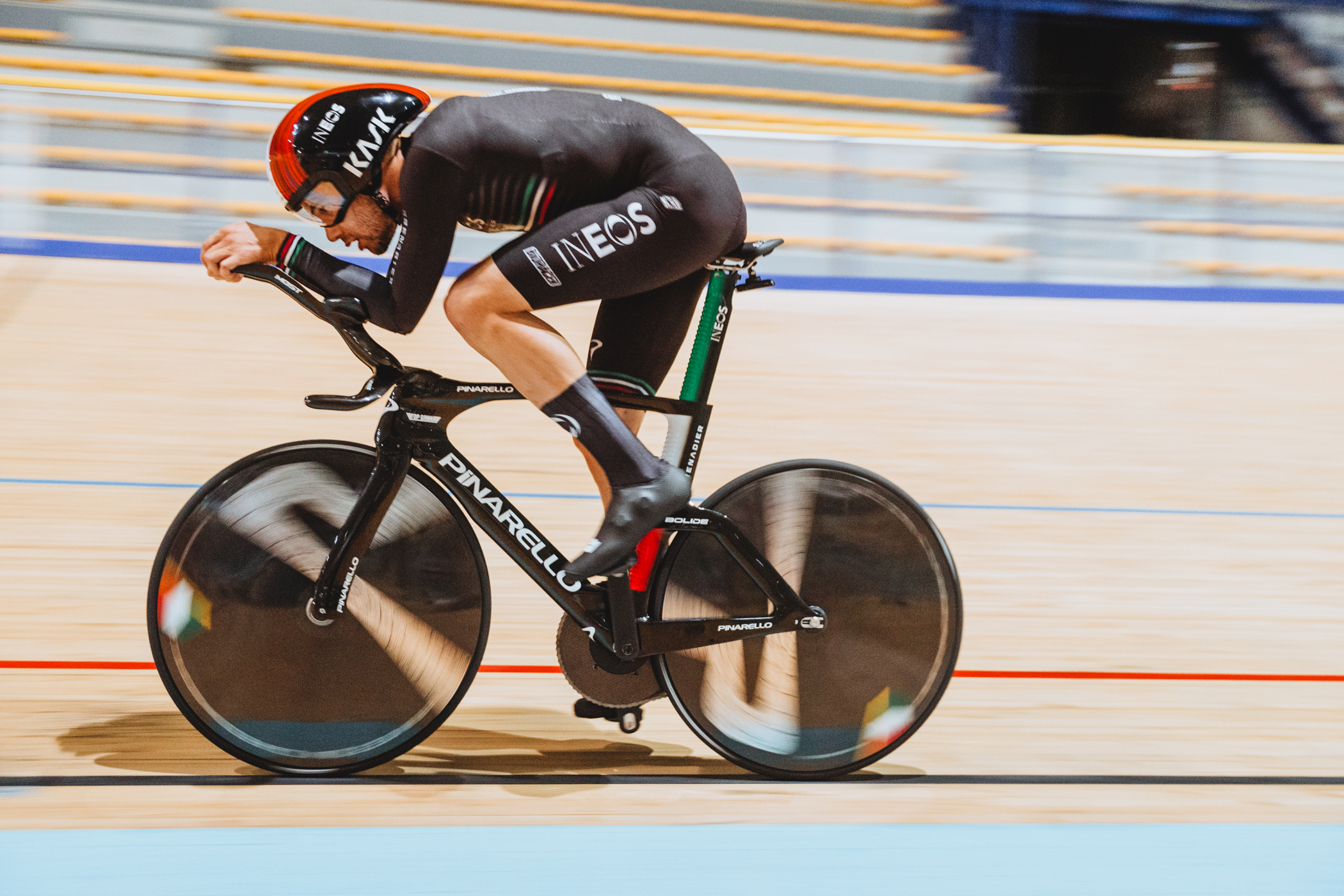
The best skinsuits are optimised for different speeds and other parts of the bike should be too, according to Tate - something else that has just emerged from his review of the original wind sensor study.
“With the wind sensors we found that as well as a difference in yaw angle, there's also a difference between the apparent wind speed at the front and and the apparent wind speed at the rear. By the time the airflow reaches the rear wheel it has slowed down essentially,” explains Tate.
“So not only should you be designing for different wind conditions in terms of yaw angle at the rear but also for different wind conditions in terms of the airspeed.
“This is important because airflow characteristics are defined by the Reynolds number. The Reynolds number is determined by a number of factors including the flow speed as well as things like the shape and length of the object. So the Reynolds number of the flow of the air at the front wheel is different from the rear wheel.
“If you look at the 3D-printed Pinarello track bike with the different features on the frame, those features will interact differently with the air at different Reynolds numbers or wind speeds - so it's why on skinsuits they talk about why this suit is faster for riders at 50kph whereas if you're riding at 60kph you need a different suit. There are different skinsuits designed to perform best on the road, for time trials, pursuits and sprints on the track. You have different features on the legs versus the arms because the arms are stationary and are in cleaner air; the legs are in dirty air and they're moving.
“That extends beyond the body to the equipment, and will have implications for our future rim designs.
"This is still quite new. If we’re looking at a TT wheel we need to be looking at a wheel that’s optimised around a higher speed than a gravel wheel. It will be another input that goes into the design process."
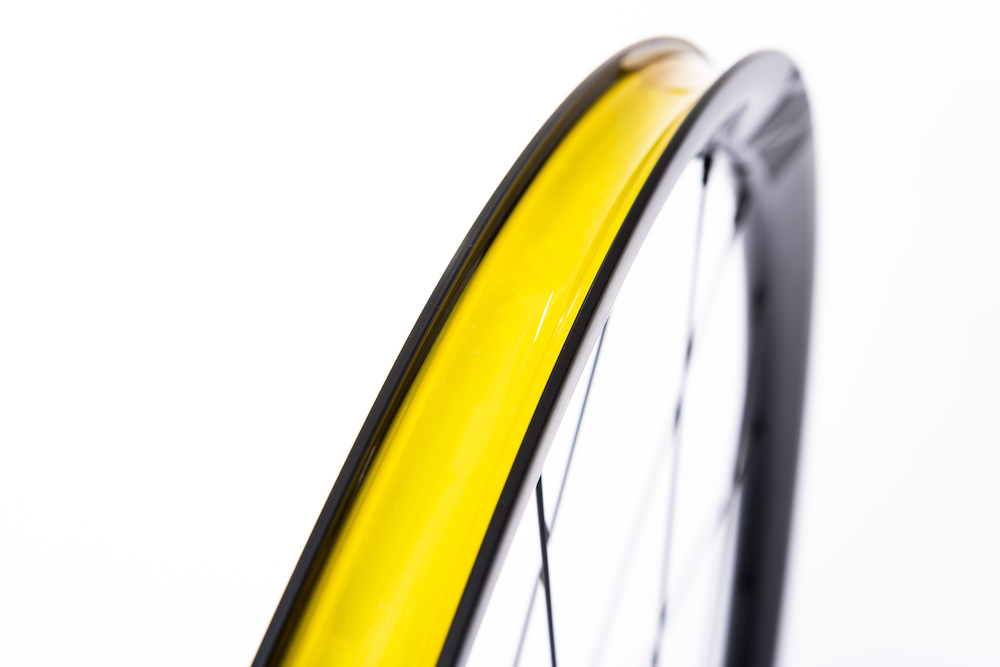
How wide is too wide for road bike wheel rim?
Will aero road wheels keep on getting wider? How wide is too wide? Tate reports, for example, that the new Parcours Disc² tests no slower with a 30mm tyre despite being optimised for a 28mm. In fact, he says, it’s even a tiny bit faster but since the difference was within the margin for error for the test he’s saying there’s “no measurable penalty”. That said, he would recommend the bigger tyre because it can be run at lower pressure for improved rolling resistance.
So in the future will road wheels actually be designed for 30mm or even bigger?
“Ultimately we are driven by tyre development on that front,” says Tate. “The choice might be thinking about what makes a tyre width faster and we are increasingly understanding that it's the ability to run a lower pressure.
“The reason you do that is because running a lower pressure reduces hysteresis loss in the tyre casing, but ultimately we also know there's a break point where you don't need the tyre to be any wider to reduce rolling resistance on a surface roughness [such as tarmac] and that's why you're not seeing 30mm tyres on the track. The track is super smooth and you don't need that much reduced hysteresis.
“We don't need to be any wider on the road as long as the road doesn't get any rougher - so that's why on gravel you see mega wide tyres.”
So is the end point for the road somewhere around 28mm?
“At the moment with current best road bike tyres, materials and design and manufacture I'm not seeing the benefits of going to a 34 or a 36 for the sake of rolling resistance. Sure you can be more comfortable, it gives you more flexibility and that's what the all-road segment is about, but in terms of pure speed and performance it might be then we go a little bit wider than a 28mm but I don't currently see going too much further.”

Are hookless bike wheel rims pointless?
“Our gravel wheels have a hookless rim and we've changed the resin that's used in the edge of the rim so it's a bit more flexible for impact resistance and that’s very important,” says Tate. “You can't do that with a hook because you need the hook to be rigid. But I’m not sure about the benefits of hookless on the road versus the trade-off in tyre compatibility.
“Some brands are offering hookless rims that are optimised around a 25mm tyre. That's great if you're 60 or 70 kg but if you're a 90kg rider you need to be riding tyre pressures above 72psi [the ETRTO recommended maximum for hookless]. “So immediately you're cutting out a portion of your market by saying ‘you're too heavy, this wheel doesn't work for you’.
“The other angle is the brands who have launched hookless and are saying hookless is faster. I've never seen test data from a third-party brand of identical rims where the only difference is hookess or hooked.
“On the rack I've got a Strade front wheel with a hookless rim. The only difference between that and a production Strade is the hookless rim. Put that in a wind tunnel and we couldn't see a difference.”
What about the claims that hookless is cheaper to manufacture and that’s why it’s taking off?
“When you're moulding a hookless rim you can use a steel mandrel inside the rim whereas if it's hooked you have to use a disposable mandrel. “We use one that's a polystyrene that will degrade in the heat of the autoclave when you're curing the carbon. It has to be disposable because you have to be able to remove it and you can't remove a solid steel piece from underneath the hooks. Those mandrels cost about $2 each. With our business model - no distribution, retail etc - a $2 production difference doesn't multiply up to a vast difference.”
So why are the big brands pushing it?
“I don't buy this whole conspiracy about how ‘’Big Wheel’ is pushing you towards hookless because it's cheaper to make. The biggest saving is going to be in quality control because there's less to go wrong: you can be more precise with your manufacturing in hookless. We don't have a very high reject rate but if you have a higher reject rate you will save more money by going hookless.
"So in essence we don't need to go hookless to compete. There's no pull factor for us to go hookless so there has to be a push factor and the push factor has to be performance because that's the basis for the decisions we make.”

Are carbon spokes worth the money?
Tate had a sample Parcours wheel built with carbon spokes that he showed us, but he isn’t convinced.
“We could do carbon spokes tomorrow - you just buy them from the same factory but it's just whether or not there is enough of a benefit versus the price.
“These ones are great because they actually fit onto a standard hub because they’ve got a steel insert at both ends - because this thickness of spoke won't fit through a normal spoke hole.
“So you either have an overly complex spoke insert or you have a custom hub, and most of the other brands have gone down the route of the custom hub.
“Yes they are lighter, you save 100g for a wheel. But is it the best way to save 100g, is it worth it versus the increased cost? A Sapim CX-Ray would cost us $1.50 OE price. Carbon would cost us $5. If you look at the retail price difference it’s about £300 or £3 per gram.
Then what's the durability like? Carbon is great in tension but it doesn't have the same flexibility that steel has, so if you have an impact what's going to happen? If you break a carbon spoke there's also shards of carbon everywhere.
“There are pros and cons, but if the biggest pro is everyone else is doing it… then TBC on that.
“But if I'm playing devil's advocate then none of the big established wheel brands are doing it and if they're not, why not? I can't make a convincing argument for it yet.”
Parcours recently launched its new Chrono, Chrono Max and Disc² wheels, which it says are its fastest ever wheels, clearly a motivation for Tate to continue a publicity campaign around them - and indeed the stability testing is focused on those wheels - but is it a sensible idea to give away the details of your new project before you’ve even published the data? Doesn’t he risk it falling into the hands of what he calls ‘Big Wheel’?
“I always get asked why am I sitting here talking publicly about it when it’s something that applies to any brand of wheel and they might steal my ideas.
“But as a brand we are always transparent: we can't go public and say running a disc wheel makes you 20% or 30% more stable without showing or numbers, and if that means other people copy it or use it then so be it.
“It also keeps the pressure on us as a business to say if we publish this I have two years to use it because that's how long it takes people to reverse engineer something.
“But we’ll always have first-mover advantage. From a brand perception people always say, oh, I’ve seen that somewhere before.
“And it keeps us honest because we can’t sit around relying on something for 10 years and getting complacent. There are some brands that are onto the same design philosophy and have done similar research but that just validates what we’ve done.”

Thank you for reading 20 articles this month* Join now for unlimited access
Enjoy your first month for just £1 / $1 / €1
*Read 5 free articles per month without a subscription

Join now for unlimited access
Try first month for just £1 / $1 / €1
The latest race content, interviews, features, reviews and expert buying guides, direct to your inbox!
Simon Smythe is a hugely experienced cycling tech writer, who has been writing for Cycling Weekly since 2003. Until recently he was our senior tech writer. In his cycling career Simon has mostly focused on time trialling with a national medal, a few open wins and his club's 30-mile record in his palmares. These days he spends most of his time testing road bikes, or on a tandem doing the school run with his younger son.
